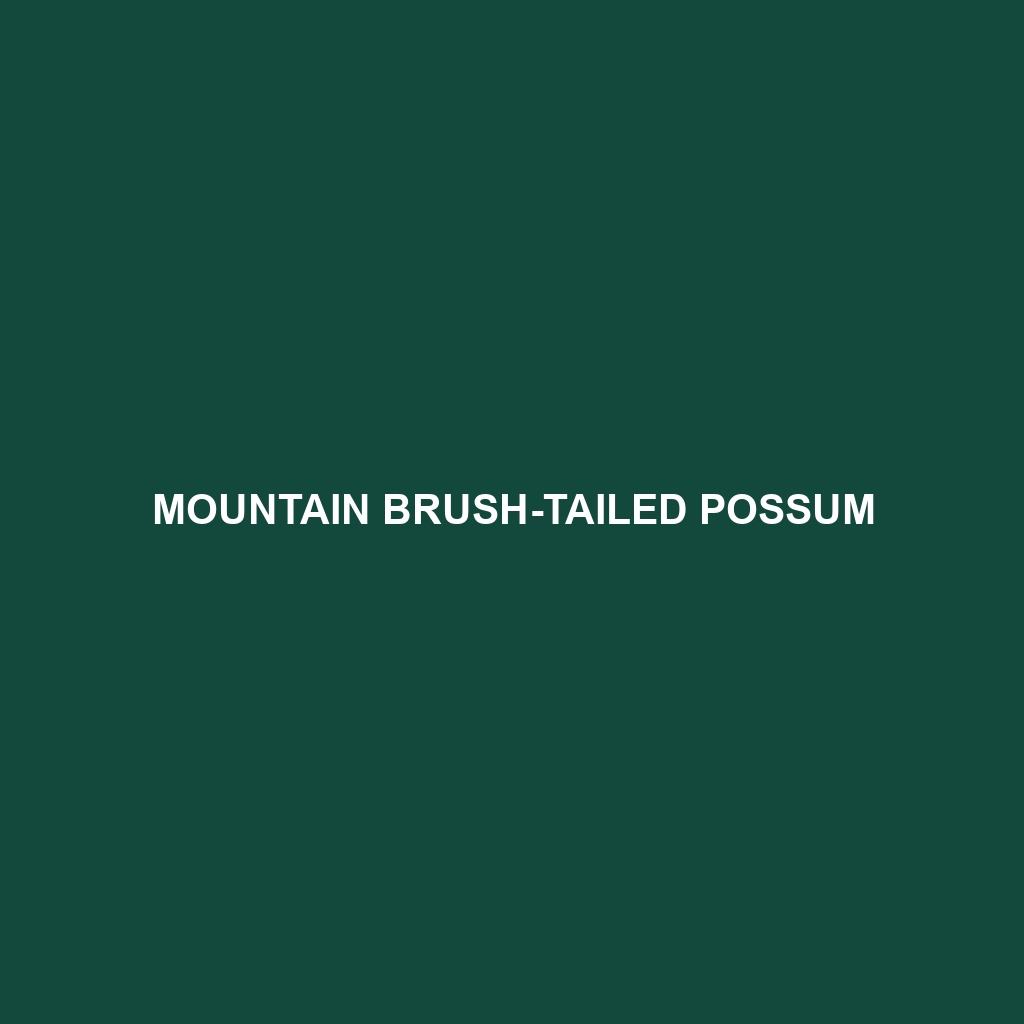Coppery Brush-tailed Possum
The Coppery Brush-tailed Possum (Trichosurus johnstonii) is a nocturnal marsupial native to the rainforests of northeastern Queensland, Australia. This unique possum is renowned for its striking copper-colored fur and characteristic long, bushy tail that assists in its arboreal lifestyle. As a member of the Phalangeridae family, the Coppery Brush-tailed Possum plays a significant role in its ecosystem, particularly in seed dispersal and maintaining forest health.
Physical Characteristics
Size: An adult Coppery Brush-tailed Possum typically measures between 32 and 58 cm (12.5 to 23 inches) in body length, with an additional tail length of about 24 to 40 cm (9.5 to 15.5 inches). They weigh between 1.2 and 4.5 kg (2.6 to 10 pounds).
Coloration: Their fur is predominantly coppery or reddish-brown, giving them their distinctive name. The coloration can vary slightly depending on their habitat and diet. The underparts are usually lighter, sometimes presenting a cream or pale tan hue.
Special Features: They have a prehensile tail, which is thick and bushy, aiding in climbing and balance. Their sharp claws and opposable thumbs are also adapted for gripping branches and navigating the treetops.
Behaviors
Social Interactions: Coppery Brush-tailed Possums are primarily solitary creatures, although they may interact with others during the breeding season. They mark their territory using scent glands and are known to be quite territorial, especially males.
Feeding Habits: These possums are herbivorous and have a diet that consists mainly of leaves, flowers, fruits, and occasionally bark. They are known to favor certain tree species, which they help propagate through their seed dispersal activities.
Ecological Roles: As active foragers, they play a critical role in seed dispersal and the maintenance of forest health. Their feeding habits help in the pruning of vegetation, which encourages new growth and supports a dynamic ecosystem.
Habitats and Adaptations
Habitats: Coppery Brush-tailed Possums are typically found in tropical rainforests and wet sclerophyll forests. They prefer dense, high-canopy forests where they can find ample food and shelter.
Adaptations: Their prehensile tail and sharp claws are highly adapted for an arboreal lifestyle. They have a keen sense of smell and night vision, which aids them in locating food and navigating through the dense forest at night.
Conservation Status
The current conservation status of the Coppery Brush-tailed Possum is listed as “Least Concern” by the IUCN Red List. However, their populations are affected by habitat loss due to deforestation and land development. Conservation efforts are essential to ensure their habitat is preserved and their populations remain stable.
Fascinating Fun Facts
Nocturnal Lifestyle: These possums are nocturnal and spend most of the day resting in tree hollows or other sheltered spots, becoming active at night to forage.
Pouch for Young: As marsupials, female Coppery Brush-tailed Possums have a pouch where they nurture their young until they are sufficiently developed to cling onto their mother’s back or branch out on their own.
Scent Marking: They use scent glands located near their chin, chest, and base of the tail to mark their territory and communicate with other possums.
Longevity: In the wild, Coppery Brush-tailed Possums can live up to 11 years, while in captivity, they can live even longer due to the absence of predators and consistent food supply.
By conserving the Coppery Brush-tailed Possum and their habitat, we ensure the continued health and diversity of Australia’s unique rainforest ecosystems.
